The wife and I were in Okinawa, Japan this past June and enjoyed some shore diving on our own. We stayed at the Royal Hotel & Restaurant in Yomitan for a phenomenal price, but we had an Okinawan friend book it for us at a reduced rate. We stayed in a one bedroom condo with a small kitchen, living room, and balcony with ocean view for around $50 a night. This hotel is located directly across from the main gate of Torii Station Army Post, but you do not notice a presence of American Military Personnel like you do at the other U.S. Military Installations on Okinawa.
Royal Hotel Website:
http://www.royalmhr.jp/
See Royal Hotel on Trip Advisor at:
http://www.tripadvisor.com/Hotel_Review-g1120814-d1158601-Reviews-Royal_Hotel- Yomitan_son_Nakagami_gun_Okinawa_Prefecture_Kyushu_Okinawa.html
We rented a small economy car from Times Car Rental in Kadena (https://www.timescar-rental.com/) at the rate of $42.00 a day. I found that the average rental rate was around $50.00 a day at other locations. Times Car Rental does have a location by the Naha Airport if you are not being picked up by someone on the island. Also they only have English speaking employees at the Naha location, but with a little bit of Japanese you can get by at the Kadena shop just fine.
While searching about diving on Okinawa prior to our trip, I had difficulty finding any place that non U.S. Military Personnel could rent tanks and weights. Most information online has to do with boat diving or paying to have a dive master lead you on a shore dive. Luckily for us, my non-diving Okinawan friend did some checking and found an Okinawa (non-English speaking) dive shop that rented equipment. As usual, we took all our own diving equipment other than tanks and weights.
The dive shop is called Ark Dive (PH# 098-897-1234) and is located in Chatan right along the Sunabe Seawall. I have included their telephone number because this is the best way to find them using the GPS in your rental car.
Their website is: http://www.arkdive.com
However the website is entirely in Japanese. Also the employees do not speak English. This company mainly caters to Mainland Japanese who come to the island to learn scuba diving. However, don’t fear, you can still get what you need. They carry two types of tanks, short fat steel tanks that the Japanese prefer to use, and taller slim aluminum tanks that are usually rented by the Americans on the island. Both have the same volume of compressed air so either will work fine. Just remember that the steel tank will be heavier so you will need to adjust you weight for proper buoyancy. Also you will need to convert the weight you normally use from pounds to kilograms. 1 lb = .45 kg. So for example if you normally use 10 lbs diving in saltwater, that would equal 4.5 kg. Since the weights only come in whole kilograms you would round up to 5 kg. So basically take what ever you use in pounds and cut that in half and you will be in the right ballpark with your weight needed in kilograms. (Round up or down as needed for proper buoyancy.)
Okay, so you and your buddy want to go shore diving on your own and decide to rent tanks from Ark Dive. Here is how simple it is if you do not speak Japanese. You go in the dive shop with your certification cards and hand them to an employee. You point at the tanks and hold up the number of fingers for the number of tanks you want. Then make a motion around your waist to indicate a weight belt and hold up the number of fingers for the kilograms in weights that you need. They will put the weights on a weight belt, so if your BCD has weight pockets you can indicate to them that you do not need the belt, or just take the weights off the belt yourself when you get to your dive site. Once you have told them what equipment you need, they will add it up on a calculator and show you the total price in Yen. Give them the proper Yen and the transaction is done. Usually they will have you pay before you leave, but if you have been coming in for several days and they are busy, they will indicate to pay them when you return the equipment.
Of course I would recommend that you at least learn the basics of Japanese if you are going there. Such as greetings, counting to ten, saying “thank you” “excuse me” “I’m sorry” “I understand” “I don’t understand” and “Okay”. This should give you a good start. You can get a small pocket Japanese phrase book. Or learn these phrases on the Internet.
Now the part that I thought was very interesting and refreshing. They only charge you for the air tanks that you actually use. So say for example that you and your buddy rent six tanks of air so you can do three dives during the day. After the first dive the sea conditions become too hazardous to continue diving. You return to the dive shop and tell them that you have four unused tanks. They refund you the money for those unused tanks of air. This happened to us after our first dive one day. My wife was suffering from dehydration and heat exhaustion which caused her to become ill so we cancelled our diving for the rest of the day. When we returned with our unused full tanks of air, Ark Dive refunded our money for those tanks.
Now for the important part, how much did it cost? Weight rental was around $4 per person and a tank of air was about $6. So in other words we paid 1300 yen or approximately $10 for a one tank dive per person with weights. Two dives were around $16, three dives for $22, and so on. If you are diving on a budget, or just like to save money, and are competent at shore diving, this is the way to go.
We dove mostly along the seawall. Right across from Ark Dive is a nice place to get your first dive in. Remember that there may be a long walk out on top of the reef if the tide is low. But other than that, we found the diving rather easy. Our dive sites included Ark Dive / Sunabe Seawall, Kadena North / Kadena Seawall, Devil’s Cove / Toguchi Beach Park, and Larry’s Cove / Sunabe Seawall.
Larry’s Cove was by far our favorite location. Other than the difficulty in finding a parking spot for this site, everything else is nice. Larry’s Cove is located on the south end of the Sunabe Seawall. There are large steps leading down into the water. It is an easy suit up and walk in. Swim out from shore until you are in 15’ or 20’ of water and then submerge. This location is popular with American and Okinawan sunbathers and snorkelers. We went both left and right at this site. While both were good, we would have to say that going to the right is the better dive.
To the left tends to be mostly dirt at the bottom of the wall as you are heading towards the channel for the adjacent marina. We did however encounter a small bait ball of fish which circled around us for some time. We were also joined by a small Ballonfish that swam between us for 15 minutes of this dive.
To the right the underwater coral topography is much more diverse. This also can make orientation more difficult so pay attention to you compass and underwater landmarks. We also found that the sea life was more abundant on this side. All the small coral fish, several varieties of starfish, several varieties of nudibranch, pufferfish, cowfish, boxfish, trumpetfish, cornetfish, Japanese Barracuda, pipefish, and Black-banded Sea Snakes to name a few. We have also never seen so many sea cucumbers any place we have been.
For those that do not like snakes, you are most likely going to encounter them on every dive in Okinawa. We saw several on every dive, and at Devil’s Cove they were abundant. That being said, only one really showed any curiosity towards us. Just leave them alone and they will more than likely leave you alone. We did not see any really large fish, sharks, or rays on our dives, but the coral life was very healthy and there were plenty of small things to hunt for. These are not even the best dive sites in the Ryukyu (Okinawa) Islands, but they were still as good as any other ocean dives we have done around the globe. Our dives were around 35 to 50 feet deep, all though I did get down to 70 feet on one dive. The water temperature was around 77 degrees. The visibility was only around 30 to 50 feet depending on the weather.
If you are going to Okinawa, be sure to plan sometime to get wet. You won’t regret it.
Royal Hotel Website:
http://www.royalmhr.jp/
See Royal Hotel on Trip Advisor at:
http://www.tripadvisor.com/Hotel_Review-g1120814-d1158601-Reviews-Royal_Hotel- Yomitan_son_Nakagami_gun_Okinawa_Prefecture_Kyushu_Okinawa.html
We rented a small economy car from Times Car Rental in Kadena (https://www.timescar-rental.com/) at the rate of $42.00 a day. I found that the average rental rate was around $50.00 a day at other locations. Times Car Rental does have a location by the Naha Airport if you are not being picked up by someone on the island. Also they only have English speaking employees at the Naha location, but with a little bit of Japanese you can get by at the Kadena shop just fine.
While searching about diving on Okinawa prior to our trip, I had difficulty finding any place that non U.S. Military Personnel could rent tanks and weights. Most information online has to do with boat diving or paying to have a dive master lead you on a shore dive. Luckily for us, my non-diving Okinawan friend did some checking and found an Okinawa (non-English speaking) dive shop that rented equipment. As usual, we took all our own diving equipment other than tanks and weights.
The dive shop is called Ark Dive (PH# 098-897-1234) and is located in Chatan right along the Sunabe Seawall. I have included their telephone number because this is the best way to find them using the GPS in your rental car.
Their website is: http://www.arkdive.com
However the website is entirely in Japanese. Also the employees do not speak English. This company mainly caters to Mainland Japanese who come to the island to learn scuba diving. However, don’t fear, you can still get what you need. They carry two types of tanks, short fat steel tanks that the Japanese prefer to use, and taller slim aluminum tanks that are usually rented by the Americans on the island. Both have the same volume of compressed air so either will work fine. Just remember that the steel tank will be heavier so you will need to adjust you weight for proper buoyancy. Also you will need to convert the weight you normally use from pounds to kilograms. 1 lb = .45 kg. So for example if you normally use 10 lbs diving in saltwater, that would equal 4.5 kg. Since the weights only come in whole kilograms you would round up to 5 kg. So basically take what ever you use in pounds and cut that in half and you will be in the right ballpark with your weight needed in kilograms. (Round up or down as needed for proper buoyancy.)
Okay, so you and your buddy want to go shore diving on your own and decide to rent tanks from Ark Dive. Here is how simple it is if you do not speak Japanese. You go in the dive shop with your certification cards and hand them to an employee. You point at the tanks and hold up the number of fingers for the number of tanks you want. Then make a motion around your waist to indicate a weight belt and hold up the number of fingers for the kilograms in weights that you need. They will put the weights on a weight belt, so if your BCD has weight pockets you can indicate to them that you do not need the belt, or just take the weights off the belt yourself when you get to your dive site. Once you have told them what equipment you need, they will add it up on a calculator and show you the total price in Yen. Give them the proper Yen and the transaction is done. Usually they will have you pay before you leave, but if you have been coming in for several days and they are busy, they will indicate to pay them when you return the equipment.
Of course I would recommend that you at least learn the basics of Japanese if you are going there. Such as greetings, counting to ten, saying “thank you” “excuse me” “I’m sorry” “I understand” “I don’t understand” and “Okay”. This should give you a good start. You can get a small pocket Japanese phrase book. Or learn these phrases on the Internet.
Now the part that I thought was very interesting and refreshing. They only charge you for the air tanks that you actually use. So say for example that you and your buddy rent six tanks of air so you can do three dives during the day. After the first dive the sea conditions become too hazardous to continue diving. You return to the dive shop and tell them that you have four unused tanks. They refund you the money for those unused tanks of air. This happened to us after our first dive one day. My wife was suffering from dehydration and heat exhaustion which caused her to become ill so we cancelled our diving for the rest of the day. When we returned with our unused full tanks of air, Ark Dive refunded our money for those tanks.
Now for the important part, how much did it cost? Weight rental was around $4 per person and a tank of air was about $6. So in other words we paid 1300 yen or approximately $10 for a one tank dive per person with weights. Two dives were around $16, three dives for $22, and so on. If you are diving on a budget, or just like to save money, and are competent at shore diving, this is the way to go.
We dove mostly along the seawall. Right across from Ark Dive is a nice place to get your first dive in. Remember that there may be a long walk out on top of the reef if the tide is low. But other than that, we found the diving rather easy. Our dive sites included Ark Dive / Sunabe Seawall, Kadena North / Kadena Seawall, Devil’s Cove / Toguchi Beach Park, and Larry’s Cove / Sunabe Seawall.
Larry’s Cove was by far our favorite location. Other than the difficulty in finding a parking spot for this site, everything else is nice. Larry’s Cove is located on the south end of the Sunabe Seawall. There are large steps leading down into the water. It is an easy suit up and walk in. Swim out from shore until you are in 15’ or 20’ of water and then submerge. This location is popular with American and Okinawan sunbathers and snorkelers. We went both left and right at this site. While both were good, we would have to say that going to the right is the better dive.
To the left tends to be mostly dirt at the bottom of the wall as you are heading towards the channel for the adjacent marina. We did however encounter a small bait ball of fish which circled around us for some time. We were also joined by a small Ballonfish that swam between us for 15 minutes of this dive.
To the right the underwater coral topography is much more diverse. This also can make orientation more difficult so pay attention to you compass and underwater landmarks. We also found that the sea life was more abundant on this side. All the small coral fish, several varieties of starfish, several varieties of nudibranch, pufferfish, cowfish, boxfish, trumpetfish, cornetfish, Japanese Barracuda, pipefish, and Black-banded Sea Snakes to name a few. We have also never seen so many sea cucumbers any place we have been.
For those that do not like snakes, you are most likely going to encounter them on every dive in Okinawa. We saw several on every dive, and at Devil’s Cove they were abundant. That being said, only one really showed any curiosity towards us. Just leave them alone and they will more than likely leave you alone. We did not see any really large fish, sharks, or rays on our dives, but the coral life was very healthy and there were plenty of small things to hunt for. These are not even the best dive sites in the Ryukyu (Okinawa) Islands, but they were still as good as any other ocean dives we have done around the globe. Our dives were around 35 to 50 feet deep, all though I did get down to 70 feet on one dive. The water temperature was around 77 degrees. The visibility was only around 30 to 50 feet depending on the weather.
If you are going to Okinawa, be sure to plan sometime to get wet. You won’t regret it.
Attachments
-
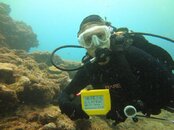 Picture 190.jpg37.6 KB · Views: 145
Picture 190.jpg37.6 KB · Views: 145 -
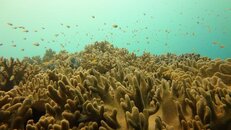 Picture 253.jpg36.3 KB · Views: 152
Picture 253.jpg36.3 KB · Views: 152 -
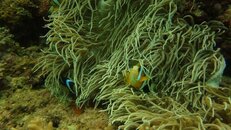 Picture 313.jpg49.4 KB · Views: 149
Picture 313.jpg49.4 KB · Views: 149 -
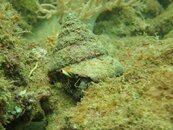 Picture 340a.jpg59.2 KB · Views: 150
Picture 340a.jpg59.2 KB · Views: 150 -
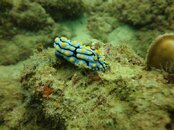 Picture 347.jpg47.9 KB · Views: 152
Picture 347.jpg47.9 KB · Views: 152 -
 Picture 351.jpg51 KB · Views: 160
Picture 351.jpg51 KB · Views: 160 -
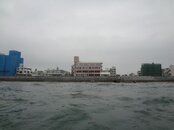 Picture 289.jpg22.6 KB · Views: 150
Picture 289.jpg22.6 KB · Views: 150 -
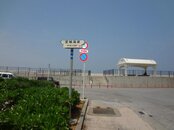 Picture 153.jpg29.8 KB · Views: 151
Picture 153.jpg29.8 KB · Views: 151 -
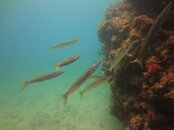 DSC03457.jpg24.3 KB · Views: 139
DSC03457.jpg24.3 KB · Views: 139 -
 Okinawa 025.jpg15.1 KB · Views: 147
Okinawa 025.jpg15.1 KB · Views: 147
Last edited:




